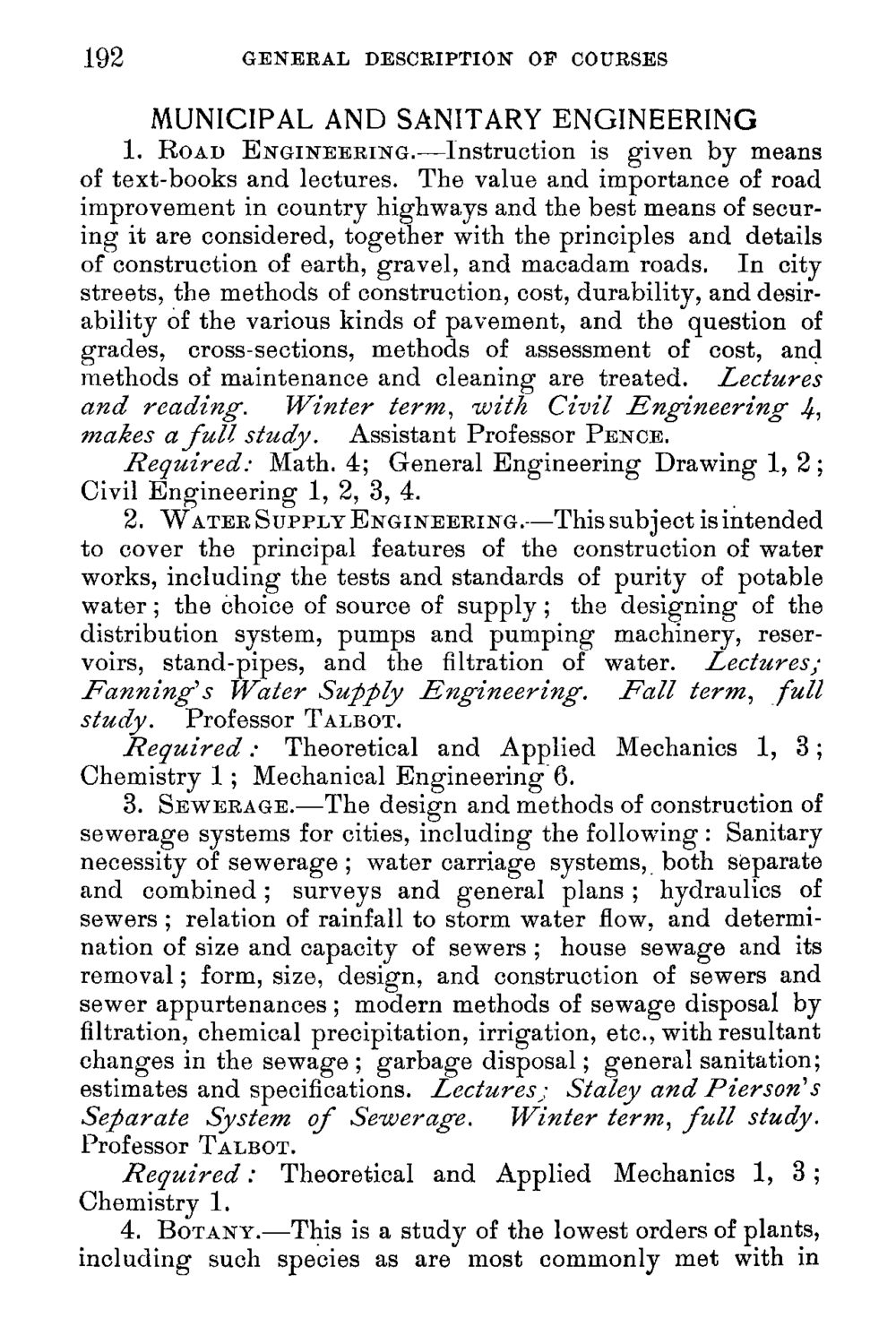| |
| |
Caption: Course Catalog - 1895-1896
This is a reduced-resolution page image for fast online browsing.

EXTRACTED TEXT FROM PAGE:
192 GENERAL DESCRIPTION OF COURSES MUNICIPAL AND SANITARY ENGINEERING 1. ROAD ENGINEERING.—Instruction is given by means of text-books and lectures. The value and importance of road improvement in country highways and the best means of securing it are considered, together with the principles and details of construction of earth, gravel, and macadam roads. In city streets, the methods of construction, cost, durability, and desirability of the various kinds of pavement, and the question of grades, cross-sections, methods of assessment of cost, and methods of maintenance and cleaning are treated. Lectures and reading. Winter term, with Civil Engineering 4, makes a full study. Assistant Professor PENCE. Required: Math. 4; General Engineering Drawing 1, 2 ; Civil Engineering 1, 2, 3, 4. 2. WATER SUPPLY ENGINEERING.—This subject is intended to cover the principal features of the construction of water works, including the tests and standards of purity of potable water; the choice of source of supply ; the designing of the distribution system, pumps and pumping machinery, reservoirs, stand-pipes, and the filtration of water. Lectures; Fanning's Water Supply Engineering. Fall term, full study. Professor TALBOT. Required: Theoretical and Applied Mechanics 1, 3 ; Chemistry 1 ; Mechanical Engineering 6. 3. SEWERAGE.—The design and methods of construction of sewerage systems for cities, including the following : Sanitary necessity of sewerage ; water carriage systems, both separate and combined; surveys and general plans ; hydraulics of sewers ; relation of rainfall to storm water flow, and determination of size and capacity of sewers ; house sewage and its removal; form, size, design, and construction of sewers and sewer appurtenances ; modern methods of sewage disposal by filtration, chemical precipitation, irrigation, etc., with resultant changes in the sewage ; garbage disposal; general sanitation; estimates and specifications. Lectures; Staley and Pierson's Separate System of Sewerage. Winter term, full study. Professor TALBOT. Required: Theoretical and Applied Mechanics 1, 3 ; Chemistry 1. 4. BOTANY.—This is a study of the lowest orders of plants, including such species as are most commonly met with in
| |